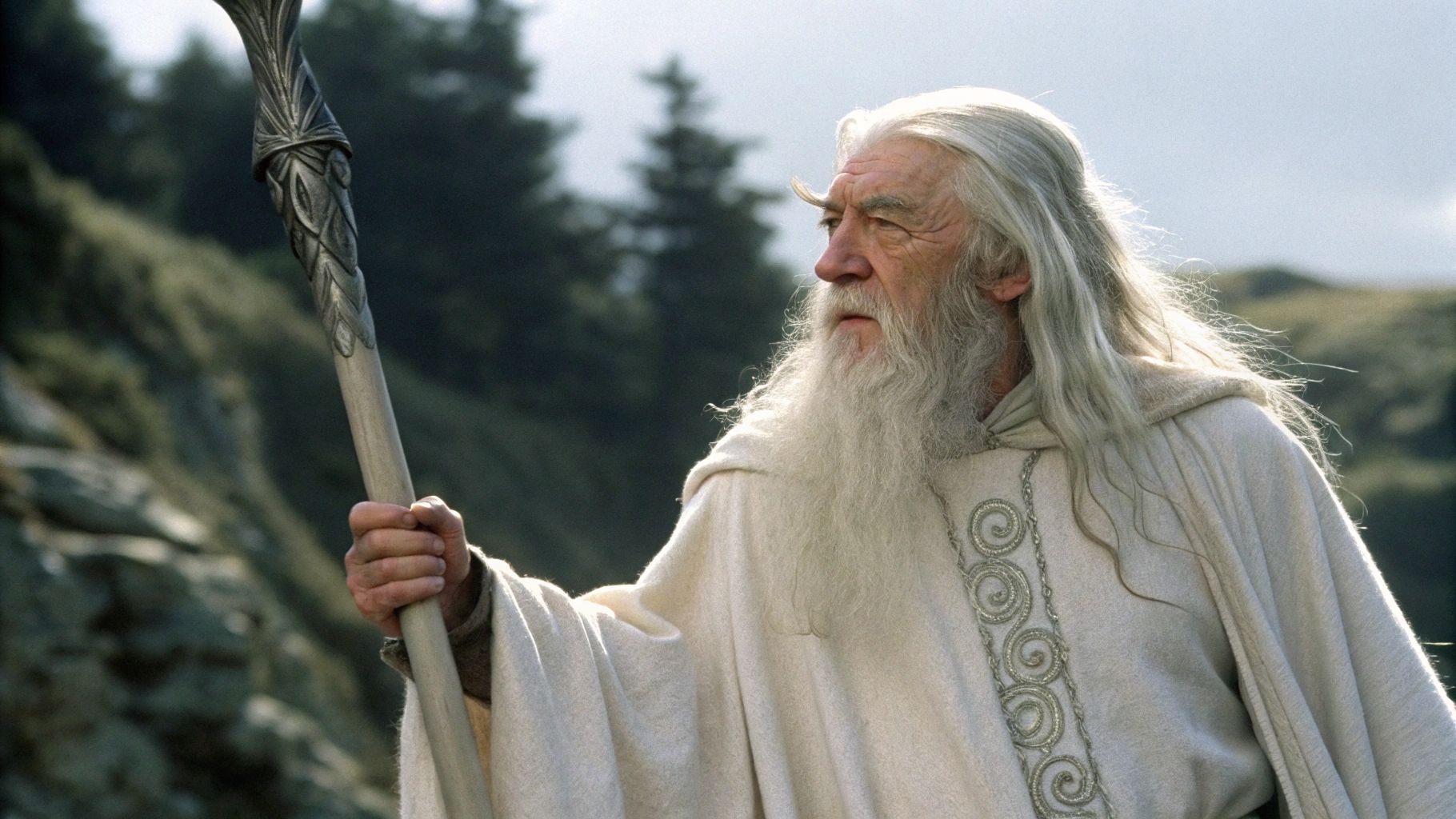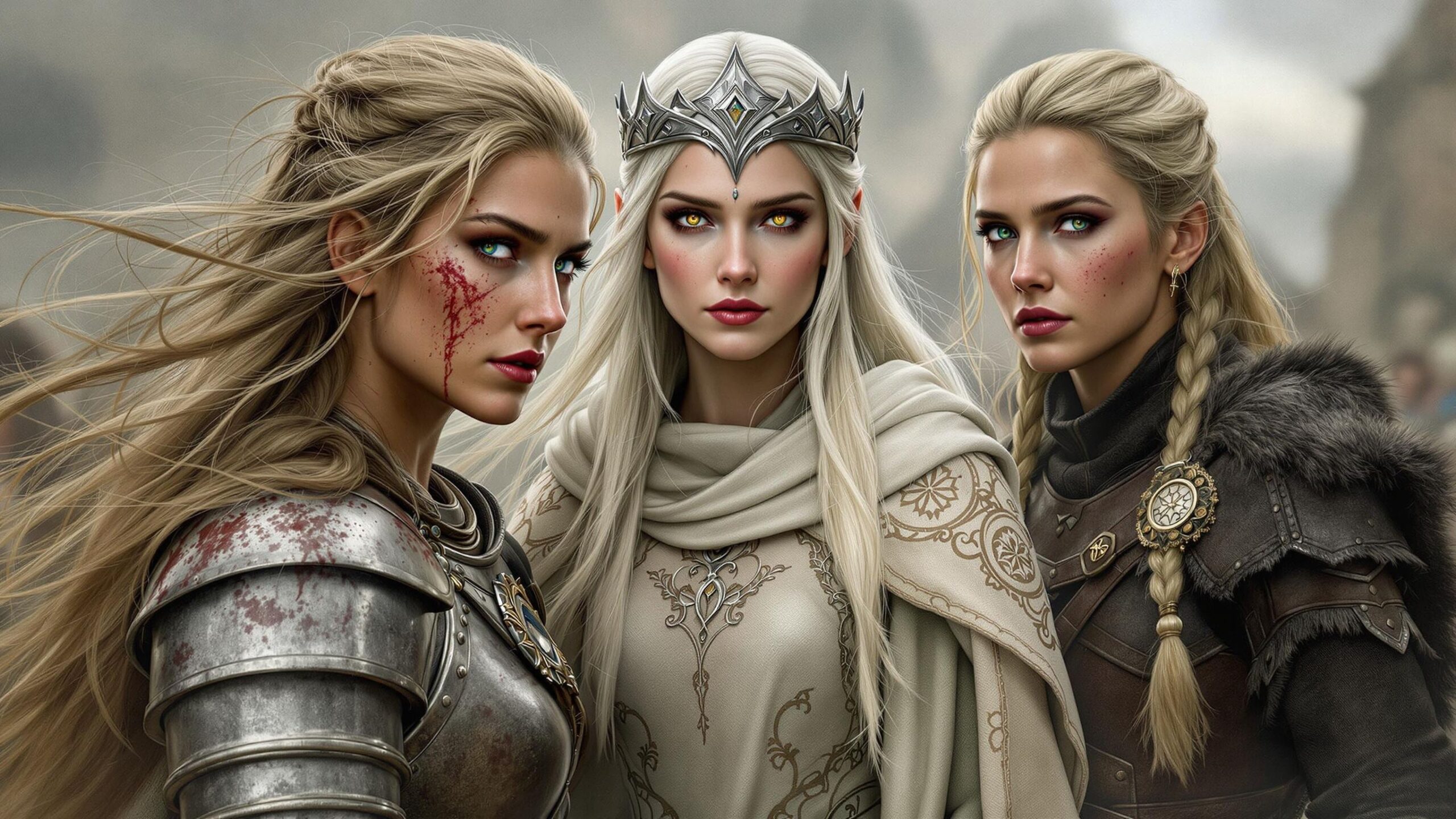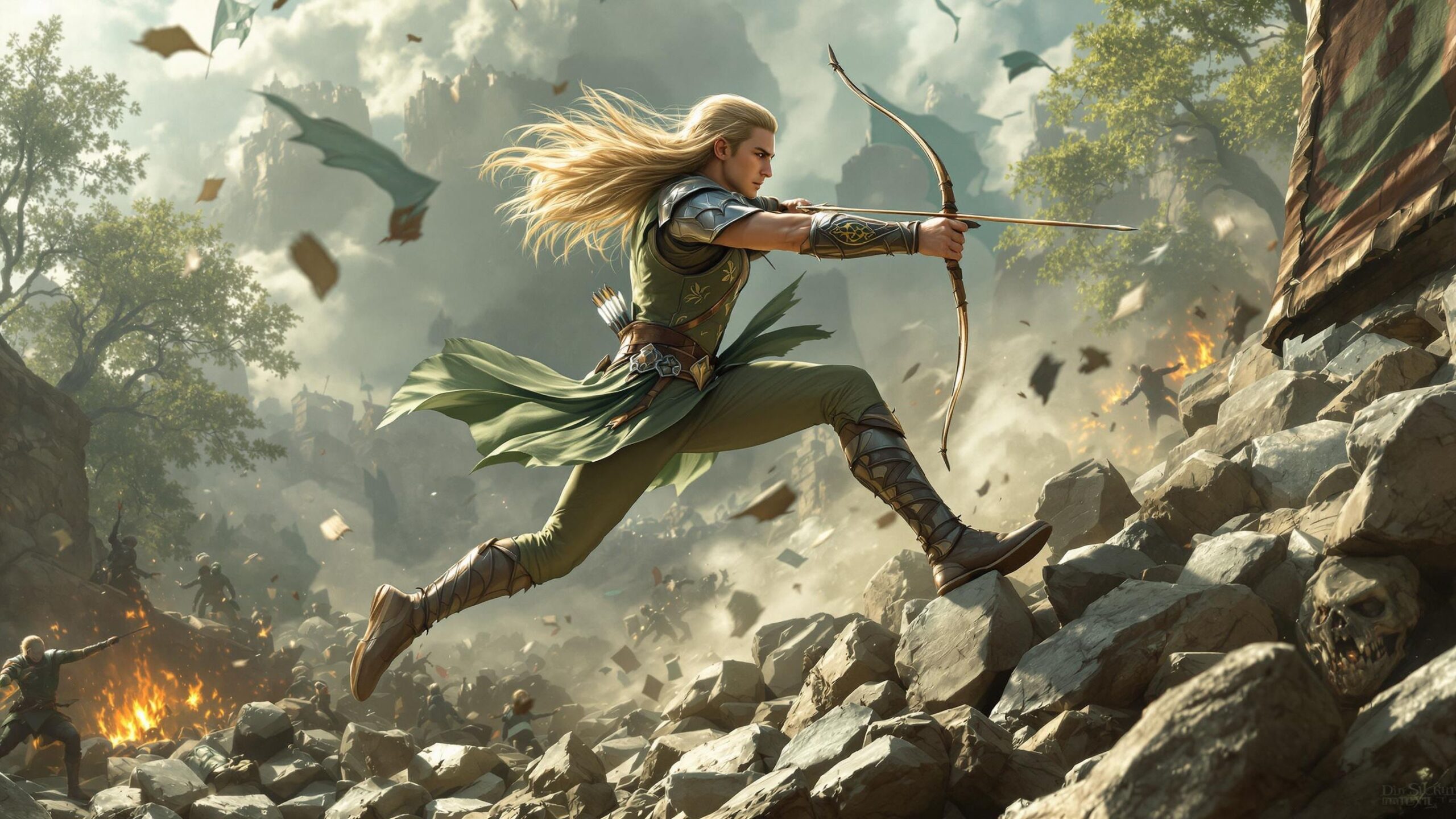Few stories in fantasy literature boast the epic scale, mythic resonance, and deeply emotional stakes of The Lord of the Rings. J.R.R. Tolkien’s masterpiece is not just a tale of good versus evil; it’s a tapestry of personal sacrifice, reluctant heroism, and legendary battles that define the fates of entire races. Throughout the saga, from the windswept heights of Helm’s Deep to the fiery chasms of Mount Doom, characters faced not only monstrous foes but the darker parts of themselves. What makes these battles so iconic isn’t just the swordplay or sorcery—it’s the emotional weight and narrative depth behind each confrontation. Here are the ten best character battles in The Lord of the Rings – not just for their cinematic brilliance, but for the way they reveal the heart and soul of Tolkien’s unforgettable heroes and villains.
#10: Boromir vs. the Uruk-hai
Boromir’s last stand is a moment of fierce redemption and haunting tragedy. After struggling internally with the pull of the Ring and even momentarily succumbing to its temptation, Boromir regains his honor in a blaze of loyalty and sacrifice. He faces a relentless tide of Uruk-hai in the woods of Amon Hen, shielding the young hobbits Merry and Pippin. With each powerful blow of his sword and every horn-blast of Gondor, Boromir proves his mettle as both a warrior and a protector. But it’s not just his martial prowess that makes this battle unforgettable—it’s the image of him taking arrow after arrow, refusing to fall, fighting with the raw defiance of a man who knows he must reclaim his soul. Sean Bean’s portrayal adds incredible depth, infusing Boromir’s final moments with regret, bravery, and grace. His whispered, “I would have followed you, my brother… my captain… my king,” to Aragorn, is one of the most heartbreaking and honorable deaths in cinematic fantasy. It’s worth noting that Bean chose to kneel rather than lie flat during his final lines to convey reverence to Aragorn, adding to the solemn nobility of the scene.
#9: Éowyn and Merry vs. the Witch-king of Angmar
At the Battle of the Pelennor Fields, one of Tolkien’s most prophetic lines—“No man can kill me”—is spectacularly fulfilled by Éowyn, a shieldmaiden of Rohan. Disguised as a man, she steps into battle and delivers the fatal blow to the Witch-king with the help of Merry’s courageous stab. What elevates this fight is not just its visual grandeur, but its thematic triumph. Éowyn represents every overlooked and underestimated soul who dares to defy fate. Her line, “I am no man!” followed by the slaying of the Nazgûl lord, is spine-tingling. It’s not just a clever subversion of prophecy—it’s a declaration of identity, strength, and agency. This scene, layered with foreshadowing and feminine power, remains a defining moment in Tolkien’s epic, showcasing that heroism comes from unexpected places. Miranda Otto’s performance is both fierce and emotionally grounded, and many fans are surprised to learn that Otto worked extensively with stunt coordinators to deliver her own swordwork, emphasizing the authenticity of the moment. For Merry, this battle is his shining act of valor, proving that even the smallest person can leave a mark in the greatest war.
#8: Aragorn vs. the Uruk-hai at Helm’s Deep
The Battle of Helm’s Deep is Tolkien’s masterclass in siege warfare, and Aragorn stands at its center, a figure of relentless hope amid overwhelming odds. When he charges out into the downpour, sword gleaming, eyes blazing with defiance, he becomes the living embodiment of the old world’s nobility. His duel against the berserker Uruk-hai wielding a spiked club is particularly memorable—not just for the raw choreography, but for the contrast it presents: the finesse and honor of Aragorn versus the brute savagery of the enemy. Viggo Mortensen’s portrayal captures Aragorn’s controlled ferocity and inner nobility. What few fans know is that during filming, Mortensen broke a toe kicking a helmet in a later scene—but insisted on doing his own stunts, including most of this battle sequence. Aragorn’s determination to defend humanity against extinction begins here in earnest, making this not just a fight, but a symbol of rising courage in dark times. There’s a visceral thrill in watching Aragorn fight shoulder to shoulder with Legolas and Gimli, showing the strength of unity among the Free Peoples.
#7: Gandalf vs. the Balrog
“In the darkness of Khazad-dûm, Gandalf faced a foe from the ancient world: the Balrog of Morgoth.” This battle isn’t just a clash of magical titans—it’s a mythic event that transcends the physical. As the Fellowship flees across the crumbling bridge in Moria, Gandalf turns to face the shadow and flame, declaring the now-immortal words: “You shall not pass!” But that’s only the beginning. The true battle happens far beyond the audience’s view—falling through shadow, ascending the endless stair, battling at the peak of Zirakzigil. Tolkien hints at this godlike conflict with poetic mystery, emphasizing Gandalf’s sacrifice and transformation. When he returns as Gandalf the White, it’s not just resurrection—it’s elevation. This duel is a turning point in the spiritual war against Sauron, showcasing the stakes of the Second Age and the timelessness of good versus evil. Ian McKellen’s delivery of Gandalf’s lines, filled with fury and resolve, gives the scene a gravity that lingers long after the flames die down. The design of the Balrog, with its fire-whip and demon wings, was heavily debated during production and remains one of Weta Workshop’s most lauded creations.
#6: Legolas vs. the Oliphaunt
Though purists debate whether this moment was “Tolkienian” or Hollywood flair, Legolas’ gravity-defying assault on a Mumakil (Oliphaunt) during the Battle of Pelennor Fields remains etched in fans’ memories. Leaping up its tusks, running along its back, shooting down enemies with perfect aim, and finally bringing the beast down singlehandedly—it’s the ultimate display of elven agility and showmanship. His deadpan follow-up to Gimli— “That still only counts as one”—adds comedic timing to sheer awe. What many don’t realize is that Orlando Bloom was injured filming earlier action scenes and performed this sequence with broken ribs. Despite the flashy visuals, the moment encapsulates the blend of artistry and prowess that defines Legolas: elegant, deadly, and always one step above mortal warriors. The Mumakil themselves were inspired by war elephants of ancient history, particularly Hannibal’s Carthaginian beasts, adding a layer of historical grounding to the fantasy spectacle. Legolas in this moment becomes almost mythological—a reminder of the ancient power still alive in Middle-earth’s elvenkind.
#5: Samwise Gamgee vs. Shelob
Sam’s battle with Shelob is one of the most emotionally loaded confrontations in the entire trilogy, not just because of the stakes, but because of who Sam is. He’s not a knight, not a wizard, not a warrior prince. He’s a gardener. A hobbit. An ordinary soul driven by extraordinary loyalty. And that’s precisely what makes his duel with the monstrous spider Shelob so powerful. After Frodo is paralyzed by her venom and presumed dead, Sam is left alone in the dark tunnels of Cirith Ungol, and it’s here that his hidden strength explodes to the surface. Wielding Sting and the Phial of Galadriel, Sam charges at Shelob with fearless rage, slashing at her legs and dodging deadly strikes. The moment he plunges Sting into her abdomen is not just a victory over a terrifying enemy—it’s a metaphor for love conquering despair, for light piercing through fear. Sam’s growth culminates in this battle. He even contemplates taking the Ring himself to finish the quest, highlighting just how far he’s come from the Shire. As Tolkien once wrote, “the greatest heroism is not always found in the mightiest warrior.” For many fans, this moment proves that Sam, not Frodo, is the true hero of The Lord of the Rings. His refusal to give up, even when all hope is lost, makes this fight one of the most poignant and unforgettable in the saga.
#4: Gandalf vs. Saruman
The wizard’s duel between Gandalf and Saruman at Isengard is a clash not just of magical power, but of ideology, friendship, and betrayal. Once comrades in the White Council, Gandalf and Saruman represent diverging paths: one of faithful resistance, the other of pragmatic domination. When Gandalf refuses to join Saruman in serving Sauron, the latter traps him atop Orthanc, using his powers to subdue and humiliate him. Though the battle is brief and mostly depicted with magical force rather than traditional combat, its implications are seismic. Saruman’s manipulation of nature and machinery contrasts with Gandalf’s elemental purity. This confrontation also reveals the corruption of power and foreshadows Saruman’s descent into megalomania. Christopher Lee, who portrayed Saruman and was the only cast member to have actually met Tolkien in real life, brought a chilling intensity to the role, while Ian McKellen’s restrained yet defiant Gandalf amplified the emotional tension. In extended editions, their rematch—culminating in Saruman’s fall—adds even more narrative weight. What’s particularly fascinating is how this duel is rooted in ancient mythological conflicts between elder figures, echoing the fall of Lucifer or the betrayal of Prometheus. It’s a philosophical battle as much as a magical one, proving that Tolkien’s world runs deeper than mere good and evil—it wrestles with the choices in between.
#3: Frodo vs. Gollum (Mount Doom)
The final battle of The Lord of the Rings is not waged with swords or spells, but with willpower, obsession, and corruption. When Frodo reaches the edge of the Cracks of Doom, he succumbs to the Ring’s power and claims it for himself. But the unexpected confrontation that follows with Gollum is what truly seals Sauron’s fate. Gollum’s ecstatic attack, biting off Frodo’s finger to reclaim his “precious,” and his ensuing fall into the lava with the Ring, is as poetic as it is brutal. This moment is layered with tragedy—Gollum is both villain and victim, driven mad by centuries of addiction. Frodo, too, is broken, hollowed by his journey. Neither truly defeats the other; it’s the Ring’s hunger that destroys them both in different ways. What’s remarkable is how Tolkien uses this final “battle” to reinforce his themes of mercy and unintended grace. Frodo’s earlier decision to spare Gollum—a moment of pity—directly enables the destruction of the Ring. In a traditional tale, the hero would cast it into the fire himself. But here, victory is messy, accidental, and steeped in moral ambiguity. It’s the ultimate narrative twist and a brilliant subversion of the typical heroic climax, proving once again that Tolkien’s work was far ahead of its time.
#2: Aragorn, Legolas, and Gimli vs. the Armies of the Dead
At the battle for Minas Tirith, Aragorn calls upon the cursed Army of the Dead to fulfill their ancient oath. While this might seem like a one-sided slaughter, it’s actually a deeply symbolic moment. Aragorn, as the rightful heir to Isildur, holds the only authority that can release these souls from their torment. His confrontation with their king beneath the haunted mountain is a battle of credibility and leadership. It’s not just about brute force; it’s about proving worth. Once the oath is honored, the trio—Aragorn, Legolas, and Gimli—sweep across the battlefield in a breathtaking show of spectral might. Watching them ride in on the Black Ships to save the city is nothing short of cinematic perfection. What fans might not know is that in the books, the Dead don’t participate directly in the Pelennor Fields—they simply help Aragorn secure the coast. The films altered this for dramatic effect, but it’s a brilliant choice that emphasizes Aragorn’s rise to kinghood. This “battle” is an emotional crescendo, fulfilling legacies, healing curses, and binding the past to the present. Each of the trio gets their moment to shine—Gimli’s humor, Legolas’ elegance, and Aragorn’s gravitas—cementing them as one of fantasy’s most beloved battle squads.
#1: The Battle of Helm’s Deep
No battle in The Lord of the Rings captures the scale, tension, and heroism of Helm’s Deep. It’s the gold standard of fantasy warfare. What begins as a desperate last stand against the might of Saruman’s Uruk-hai becomes a story of courage, unity, and faith in the face of annihilation. Aragorn and King Théoden lead the defense, with Legolas and Gimli providing both skill and levity. The visuals—glowing arrows, thunderous rain, the explosive breach of the wall—are iconic. But it’s the personal stakes that make this battle unforgettable. Every character is tested. Aragorn’s faith in mankind. Théoden’s self-worth. Gimli and Legolas’ friendship. Even the common soldier gets his moment. Behind-the-scenes stories make this even richer—filming took weeks, and most of it was done at night. Peter Jackson orchestrated thousands of extras, massive sets, and groundbreaking CGI. What you might not notice is the subtle way Jackson shows the defenders’ dwindling hope: increasingly tired faces, bloodied hands, and the quiet moments of fear before the storm. And when Gandalf arrives at dawn with the Riders of Rohan, the emotional release is overwhelming. It’s not just a victory—it’s a miracle born of grit, brotherhood, and belief. Helm’s Deep isn’t just the best battle in The Lord of the Rings—it might be the best in all of cinematic history.
The battles in The Lord of the Rings are more than clashes of swords and sorcery—they’re tests of soul, of purpose, of what each character is willing to stand for. Whether it’s Sam charging into the darkness for love, Gandalf defying a primordial beast, or Éowyn breaking prophecy with her blade, each fight is imbued with heart and meaning. These moments are why the saga endures—not just for its epic scope, but for how deeply personal every skirmish feels. They remind us that courage can come from the smallest hobbit or the grandest king, and that every choice in battle—every stand taken—can echo through history like a sword strike ringing in time.




